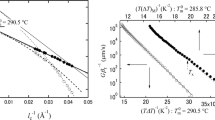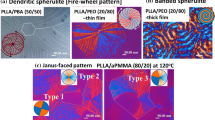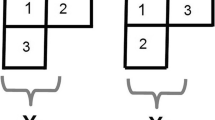Abstract
IN an extremely interesting paper, Ito1 has recently described the results of an X-ray examination of a Korean moonstone which he assumes to be similar to a specimen (described by E. Spencer2) containing approximately equal amounts of potash felspar and soda felspar, showing a blue schiller, and resembling sanidine in its glass-clear appearance and in having an abnormally low optic axial angle. Ito concludes that this crystal is an intimate intergrowth of a (monoclinic) potash felspar having the sanidine structure, and a corresponding high-temperature monoclinic form of soda felspar.
This is a preview of subscription content, access via your institution
Access options
Subscribe to this journal
Receive 51 print issues and online access
$199.00 per year
only $3.90 per issue
Buy this article
- Purchase on Springer Link
- Instant access to full article PDF
Prices may be subject to local taxes which are calculated during checkout
Similar content being viewed by others
References
Ito, T., Z. Krist., 100, 297 (1938).
Spencer, E., Min. Mag., 22, 291 (1930); 24, 453 (1937); 25, 87 (1938).
Author information
Authors and Affiliations
Rights and permissions
About this article
Cite this article
CHAO, S., TAYLOR, W. Lamellar Structure of Potash-Soda Felspars. Nature 143, 1024–1025 (1939). https://doi.org/10.1038/1431024b0
Issue Date:
DOI: https://doi.org/10.1038/1431024b0
Comments
By submitting a comment you agree to abide by our Terms and Community Guidelines. If you find something abusive or that does not comply with our terms or guidelines please flag it as inappropriate.



